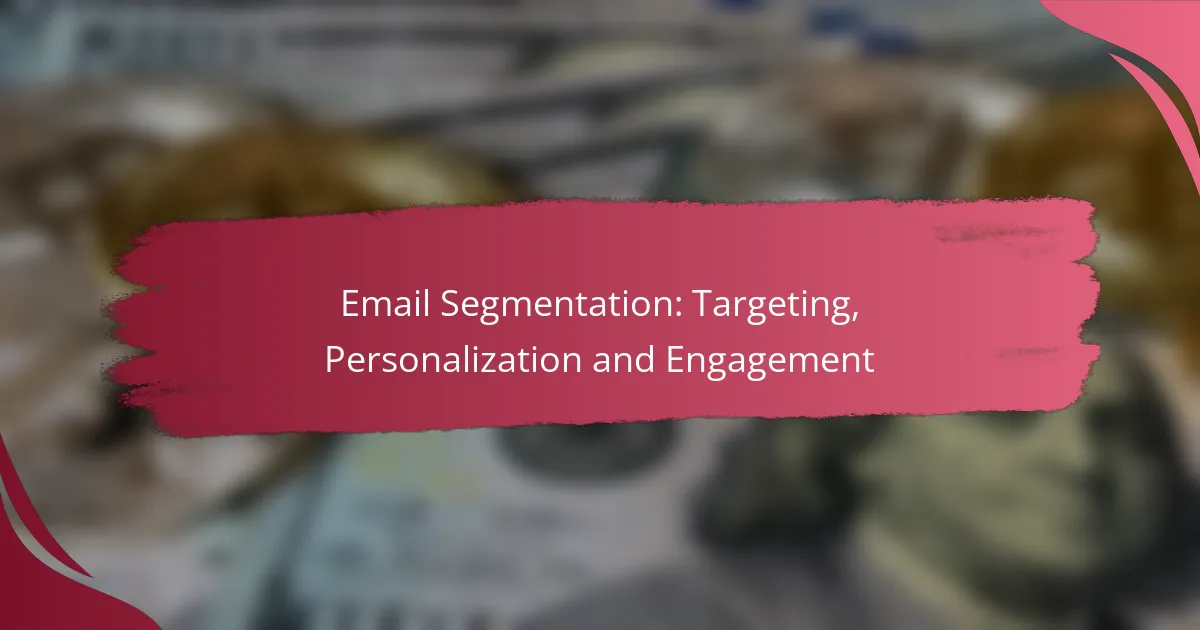Email segmentation is a crucial strategy for enhancing targeting and personalization in email marketing. By categorizing subscribers based on specific criteria, marketers can deliver relevant content that resonates with distinct audience groups, ultimately boosting engagement rates and campaign performance.
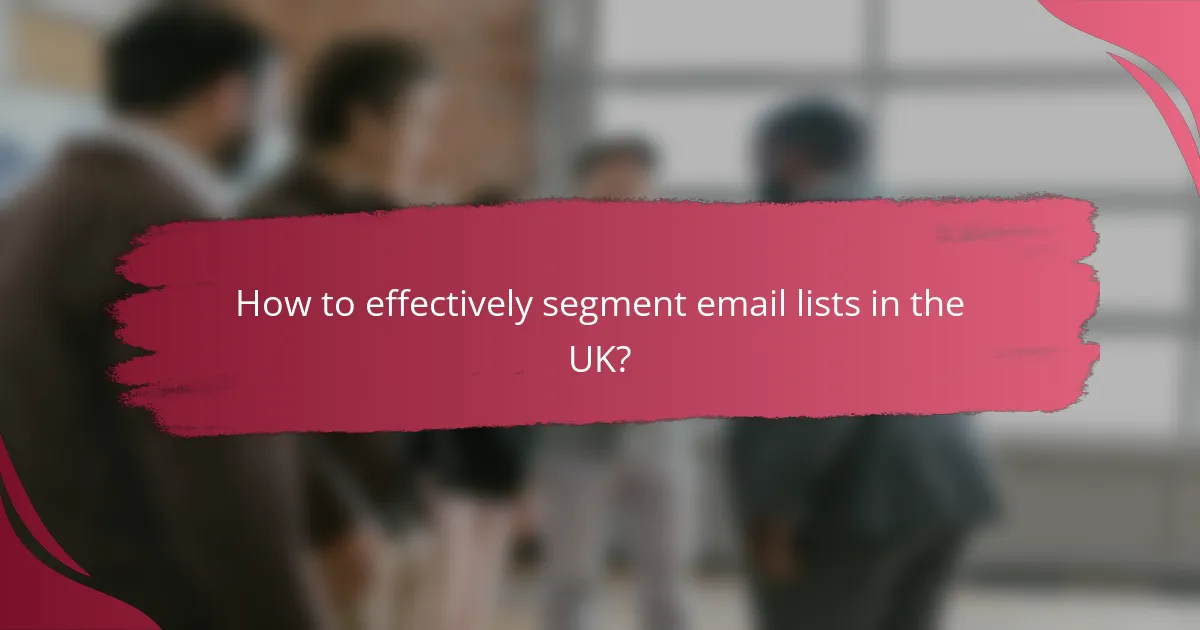
How to effectively segment email lists in the UK?
Effectively segmenting email lists in the UK involves categorizing subscribers based on specific criteria to enhance targeting and personalization. This approach increases engagement rates by delivering relevant content to distinct audience groups.
Demographic segmentation
Demographic segmentation divides your email list based on characteristics such as age, gender, income, and education level. For instance, targeting younger audiences with trendy product promotions can yield better responses than a generic approach.
Consider using surveys or registration forms to collect demographic data. This information allows for tailored messaging that resonates with specific groups, enhancing the likelihood of engagement.
Behavioral segmentation
Behavioral segmentation focuses on subscriber actions, such as past purchases, email opens, and click-through rates. By analyzing these behaviors, you can identify patterns and preferences that inform your email content.
For example, if a subscriber frequently clicks on fitness-related content, you can send them targeted offers for gym memberships or workout gear. This method fosters a more personalized experience, leading to higher conversion rates.
Geographic segmentation
Geographic segmentation categorizes subscribers based on their location, which is particularly relevant in the UK due to regional differences in culture and preferences. Tailoring content to specific areas can significantly improve engagement.
For instance, promoting local events or region-specific products can resonate more with subscribers in London compared to those in rural areas. Use location data from sign-ups or user interactions to refine your targeting.
Psychographic segmentation
Psychographic segmentation involves understanding subscribers’ lifestyles, values, and interests. This deeper insight allows for crafting messages that align with their motivations and aspirations.
For example, if your audience values sustainability, highlighting eco-friendly products in your emails can create a stronger connection. Conducting surveys or analyzing social media interactions can help gather psychographic data.
Engagement-based segmentation
Engagement-based segmentation focuses on how actively subscribers interact with your emails. This method allows you to categorize users into groups such as highly engaged, moderately engaged, and inactive.
For instance, you might send exclusive offers to highly engaged subscribers to reward their loyalty while re-engagement campaigns could target inactive users with special incentives. Regularly updating these segments ensures your strategy remains effective.
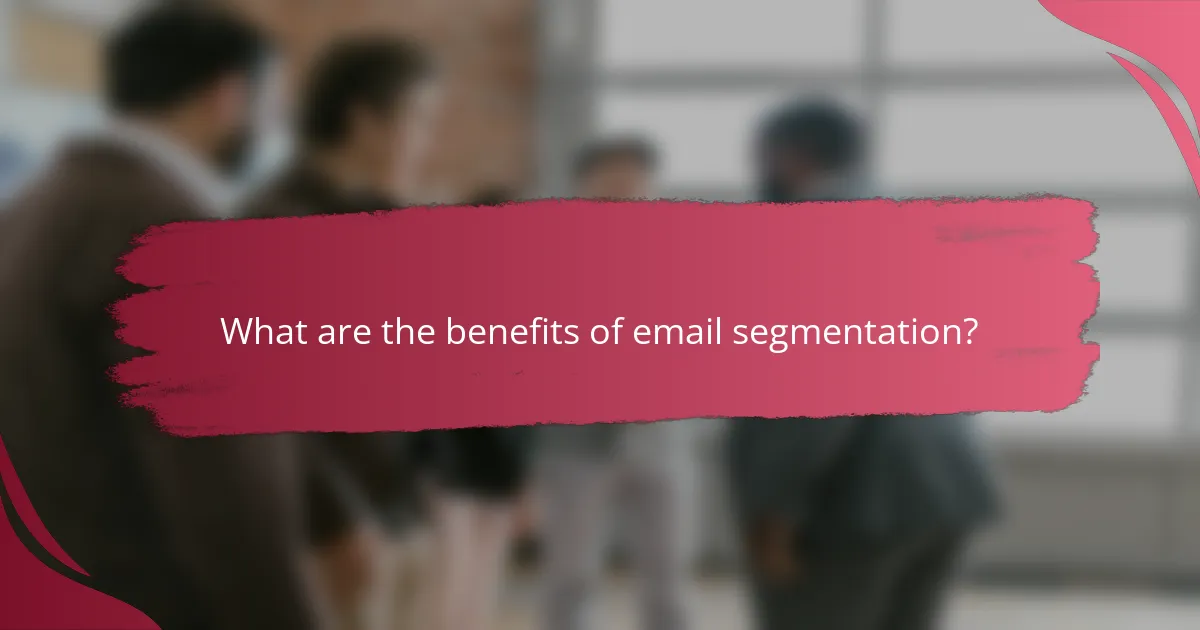
What are the benefits of email segmentation?
Email segmentation allows marketers to divide their email lists into smaller, targeted groups based on specific criteria. This approach leads to more relevant messaging, which can significantly enhance engagement and overall campaign performance.
Increased open rates
Segmenting email lists can lead to increased open rates because recipients receive messages that are more relevant to their interests and behaviors. For example, a retailer might send promotions for winter clothing to customers who previously purchased similar items, resulting in higher engagement.
To maximize open rates, consider personalizing subject lines based on the recipient’s preferences or past interactions. A/B testing different subject lines for various segments can also help identify what resonates best with each group.
Higher click-through rates
Higher click-through rates often result from email segmentation, as tailored content encourages recipients to engage with the email. When messages are aligned with the interests of specific segments, recipients are more likely to click on links and calls to action.
Utilizing dynamic content that changes based on the recipient’s segment can further enhance click-through rates. For instance, including product recommendations based on previous purchases can drive more traffic to your website.
Improved conversion rates
Email segmentation can lead to improved conversion rates by delivering targeted offers to the right audience. When customers receive promotions that match their needs, they are more likely to complete a purchase.
To enhance conversions, consider timing your emails based on customer behavior, such as sending follow-up emails after cart abandonment. This strategy can effectively nudge potential buyers toward completing their transactions.
Enhanced customer experience
Segmenting your email list enhances the overall customer experience by providing relevant content that meets the specific needs of different groups. This personalized approach fosters a sense of connection and loyalty among recipients.
To create a better experience, regularly update your segments based on changing customer behaviors and preferences. Engaging with customers through surveys or feedback forms can help refine your segmentation strategy and ensure continued relevance.
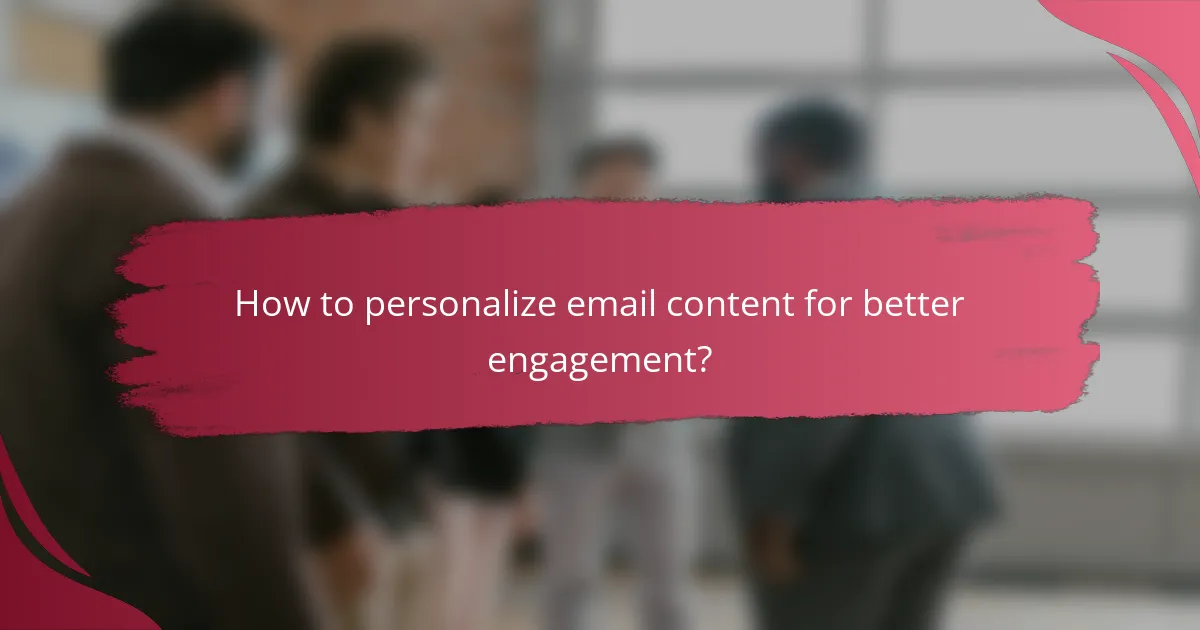
How to personalize email content for better engagement?
Personalizing email content significantly enhances engagement by making messages more relevant to recipients. This can be achieved through various strategies that tailor the content to individual preferences and behaviors.
Dynamic content insertion
Dynamic content insertion allows marketers to customize email content based on user data, such as past purchases or browsing behavior. By using variables in the email template, you can display different images, text, or offers to different segments of your audience.
For example, if a customer frequently buys outdoor gear, you can insert promotions for hiking equipment directly into their email. This targeted approach can increase click-through rates and conversions.
Personalized subject lines
Crafting personalized subject lines can significantly improve open rates. Including the recipient’s name or referencing their previous interactions can create a sense of familiarity and urgency.
For instance, a subject line like “John, your exclusive offer awaits!” is more engaging than a generic “Special Offer Inside.” Testing various subject lines can help identify what resonates best with your audience.
Tailored recommendations
Providing tailored recommendations based on user behavior can enhance the relevance of your emails. Analyzing past purchases or browsing history allows you to suggest products or content that align with individual interests.
For example, if a customer has shown interest in fitness products, sending them recommendations for related items, such as workout gear or nutrition supplements, can drive engagement and sales.
Localized offers
Localized offers cater to the geographical preferences of your audience, making promotions more relevant. This can include region-specific discounts, events, or products that resonate with local culture.
For instance, if you’re targeting customers in Europe, consider offering promotions in Euros and highlighting local events or holidays. This approach not only improves engagement but also fosters a sense of community among recipients.
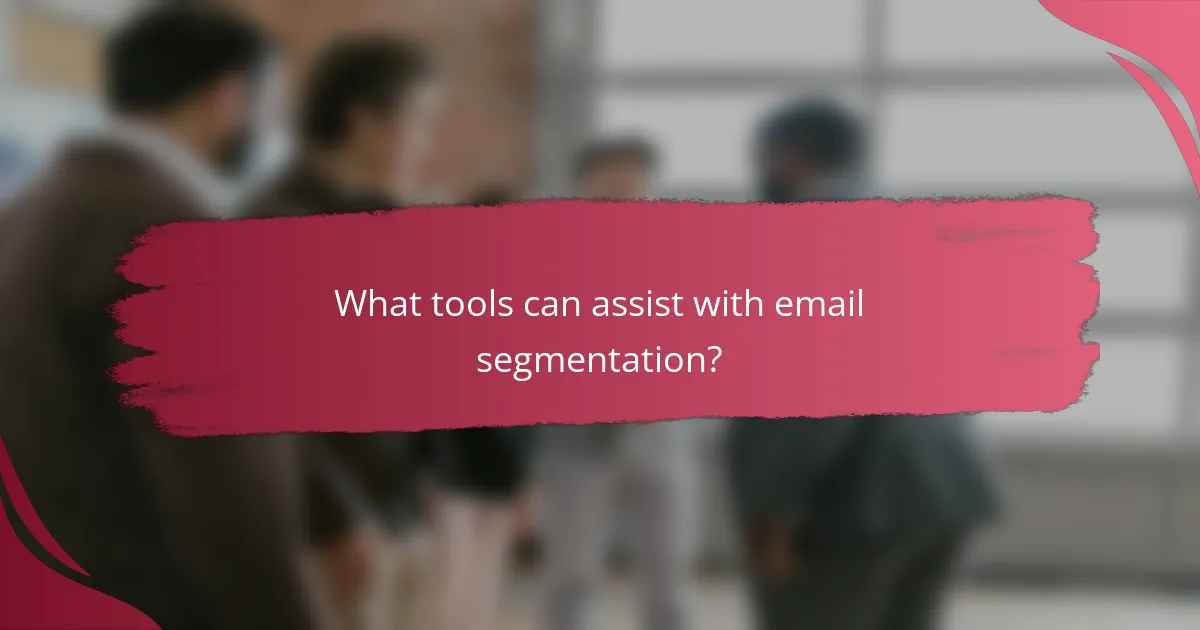
What tools can assist with email segmentation?
Several tools can enhance email segmentation by allowing marketers to categorize their audience based on various criteria. These platforms provide features for targeting, personalization, and engagement, making it easier to send relevant content to specific groups.
Mailchimp
Mailchimp offers robust email segmentation capabilities that allow users to create targeted campaigns based on user behavior, demographics, and engagement levels. Its audience dashboard provides insights that help in identifying segments that are most likely to convert.
With Mailchimp, you can easily set up automated workflows that trigger emails based on specific actions, such as cart abandonment or sign-ups. This ensures that your messaging is timely and relevant, increasing the chances of engagement.
HubSpot
HubSpot’s email marketing tool integrates seamlessly with its CRM, enabling precise segmentation based on contact properties and interactions. Users can create lists that automatically update as contacts meet certain criteria, ensuring that your segments are always current.
Additionally, HubSpot allows for A/B testing within segments, helping you optimize your emails for better performance. This feature is particularly useful for refining messaging and improving open and click-through rates.
ActiveCampaign
ActiveCampaign excels in advanced segmentation options, allowing users to create highly personalized email campaigns. You can segment your audience based on behavior, engagement scores, and even predictive analytics to anticipate customer needs.
This platform also supports automation, enabling you to send targeted messages at the right time. For example, you can set up a series of emails that nurture leads based on their interactions with your previous emails or website.
Sendinblue
Sendinblue provides a user-friendly interface for email segmentation, allowing marketers to categorize their contacts based on various criteria such as location, purchase history, and engagement metrics. This flexibility helps in crafting messages that resonate with different audience segments.
Moreover, Sendinblue offers SMS marketing integration, allowing you to reach your audience through multiple channels. This can enhance your overall engagement strategy by reinforcing your email campaigns with timely SMS reminders or promotions.
